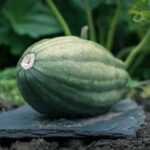Are you looking for ways to enhance the health and productivity of your vegetable garden? Consider the benefits of companion planting with marigolds. Marigolds have long been used by gardeners as a natural way to deter pests, improve soil health, and add visual appeal to their gardens. In this article, we will explore the various advantages of incorporating marigolds into your vegetable garden, from pest control to aesthetic design.
One of the key benefits of planting marigolds in vegetable gardens is their ability to repel harmful pests. We will delve into how marigolds can act as natural pest deterrents, reducing the need for chemical pesticides and promoting a more environmentally-friendly approach to gardening. Additionally, we will discuss the different varieties of marigolds available and how these options can cater to specific pest-repelling needs in your garden.
Moreover, we will provide insights into the best placement for marigolds in your vegetable garden, along with tips for caring for these vibrant flowers. We will also explore their impact on soil health and share success stories from fellow gardeners who have incorporated marigolds into their own vegetable gardens. Lastly, we will offer creative ideas for integrating marigolds into your vegetable garden design, showcasing how these versatile flowers can serve both practical and aesthetic purposes in your gardening endeavors.
How Marigolds Help to Repel Harmful Pests in Vegetable Gardens
Marigolds have long been known for their ability to repel harmful pests in vegetable gardens, making them a popular choice for companion planting. One of the main benefits of using marigolds in vegetable gardens is their natural pest deterrent properties. The strong scent of marigolds is effective at keeping away nematodes, aphids, and other common garden pests that can damage crops.
One of the key ways in which marigolds help to repel harmful pests is through the release of chemical compounds from their roots. These compounds act as a natural pesticide and are particularly effective at reducing the population of nematodes in the soil. By incorporating marigolds into your vegetable garden, you can help protect your crops from these destructive pests without the need for chemical interventions.
Research has shown that different varieties of marigolds may have varying degrees of effectiveness in repelling specific types of pests. For example, French marigolds (Tagetes patula) are known for their ability to deter whiteflies, while Mexican marigolds (Tagetes erecta) are particularly effective at repelling nematodes. Consideration should be given to the specific pest pressures in your area when selecting which variety of marigold to plant in your vegetable garden.
| Marigold Variety | Pest Repelled |
|---|---|
| French Marigold (Tagetes patula) | Whiteflies |
| Mexican Marigold (Tagetes erecta) | Nematodes |
Different Varieties of Marigolds to Choose From for Your Garden
When it comes to choosing the right variety of marigolds for your vegetable garden, there are several options to consider. Each variety offers its own unique characteristics and benefits, so it’s important to understand the differences before making a selection. Here are some popular varieties of marigolds to choose from:
- French Marigolds (Tagetes patula): Known for their compact size and abundant flowers, French marigolds come in a wide range of colors including orange, yellow, red, and bi-colors. They are great for adding a pop of color to your vegetable garden while also helping to deter pests.
- African Marigolds (Tagetes erecta): These marigolds are larger and taller than French marigolds, making them ideal for filling in empty spaces in the garden. African marigolds also come in vibrant shades of yellow and orange, and their strong scent helps keep pests at bay.
- Lemon Gem Marigold (Tagetes tenuifolia): This variety produces small, lemon-scented flowers that add a refreshing touch to the garden. Lemon gem marigolds are perfect for borders and edging around vegetable beds.
Before selecting a variety of marigold for your vegetable garden, consider factors such as the size of your garden space, the colors you prefer, and the specific pests you want to repel. With so many options available, you’re sure to find the perfect marigold variety to enhance both the beauty and health of your vegetable garden.
In addition to these common varieties, there are also hybrid marigold options that offer unique combinations of colors and scents. Whether you prefer traditional orange and yellow blooms or something more unusual like bi-colors or pastel shades, there’s a hybrid marigold out there for every gardener’s taste. Consider experimenting with different varieties in your vegetable garden to see which ones thrive best in your particular growing conditions.
Choosing the right variety of marigolds is just one step towards incorporating these beneficial companion plants into your vegetable garden. Once you have selected your preferred types of marigolds, proper placement and care will be essential to ensure they effectively support the health and growth of your vegetables while deterring harmful pests.
The Best Placement for Marigolds in Your Vegetable Garden
When it comes to planting marigolds in your vegetable garden, proper placement is key to maximizing their benefits. Marigolds are known for their ability to repel harmful pests and attract beneficial insects, so it’s important to strategically place them throughout your garden.
One of the best placements for marigolds is near plants that are susceptible to pests such as aphids, nematodes, and whiteflies. By interplanting marigolds with these vulnerable vegetables, you can help protect them from infestations and reduce the need for chemical pesticides.
Another effective placement for marigolds is along the borders of your vegetable garden. This not only adds a pop of color to your garden but also serves as a natural barrier against pests. Additionally, planting marigolds near entry points of your garden can help deter unwanted critters from entering and causing damage to your crops.
It’s also important to consider the height of different varieties of marigolds when deciding on their placement. Taller varieties can be placed towards the back or center of the garden beds, while shorter varieties can be used as edging plants or placed in between taller vegetables. This strategic placement ensures that all plants receive adequate sunlight and airflow while benefiting from the pest-repelling properties of marigolds.
| Placement | Benefit |
|---|---|
| Near susceptible plants | Protection from pests |
| Along borders and entry points | Natural barrier against pests |
| Strategic height placement | Even sunlight and airflow distribution |
Tips for Caring for Marigolds in Vegetable Gardens
When it comes to caring for marigolds in your vegetable garden, there are a few tips to keep in mind to ensure that they thrive and provide the maximum benefits for your plants. Here are some essential tips for caring for marigolds in your vegetable garden:
1. Watering: Marigolds prefer well-drained soil and should be watered regularly, especially during hot and dry periods. Overwatering can lead to root rot, so it’s important to strike a balance and let the soil dry out slightly between waterings.
2. Deadheading: To encourage continuous blooming, deadhead spent flowers by pinching them off at the base of the stem. This will not only promote new growth but also keep the plant looking tidy and attractive.
3. Fertilization: Marigolds are relatively low-maintenance when it comes to fertilization. A light dose of balanced fertilizer once a month is usually sufficient to keep them healthy and blooming throughout the growing season.
4. Pest and Disease Control: One of the main benefits of planting marigolds in vegetable gardens is their natural pest-repelling properties. However, it’s still important to monitor for any signs of pests or diseases and take appropriate action if necessary.
Incorporating these care tips into your gardening routine will help ensure that your marigolds not only enhance the beauty of your vegetable garden but also contribute to its overall health and productivity.
The Impact of Marigolds on Soil Health in Vegetable Gardens
Marigolds are not only beautiful additions to vegetable gardens, but they also have a significant impact on the soil health in these gardens. Their unique properties contribute to the overall well-being of the soil, making them a valuable companion plant for your vegetables.
Soil Conditioning
Marigolds are known for their ability to condition the soil in vegetable gardens. Their roots release chemicals that help to repel harmful nematodes, resulting in healthier soil for your vegetables to grow in. By planting marigolds alongside your vegetables, you can naturally improve the texture and quality of the soil, leading to better plant growth and overall garden productivity.
Weed Suppression
Another way marigolds positively impact soil health is through their ability to suppress weeds. The dense foliage of certain varieties of marigolds can create a barrier that prevents weed growth in the surrounding soil. By minimizing weed competition, the nutrients and moisture in the soil become more readily available for your vegetable plants, promoting their growth and development.
Nutrient Cycling
Marigolds also play a role in nutrient cycling within vegetable gardens. As they grow and eventually decompose, they release organic matter and essential nutrients back into the soil. This natural process enriches the soil with vital elements that benefit subsequent crops grown in the same area. By incorporating marigolds into your garden design, you can effectively enhance the long-term fertility of your vegetable garden’s soil.
Incorporating marigolds into your vegetable garden not only adds aesthetic appeal but also contributes significantly to maintaining healthy and fertile soil for optimal plant growth. With their ability to condition the soil, suppress weeds, and promote nutrient cycling, marigolds are truly valuable companions for any vegetable garden.
Success Stories From Gardeners Who Have Used Marigolds in Their Vegetable Gardens
Increased Pest Control and Plant Health
Many gardeners have reported success in using marigolds to control pests and improve the overall health of their vegetable gardens. By planting marigolds alongside their vegetables, these gardeners have noticed a decrease in harmful pests such as nematodes, aphids, and other insects that can damage their crops. Additionally, the strong scent of marigolds is believed to mask the smell of vegetables, making it difficult for pests to locate their favorite plants.
Improved Soil Quality
Gardeners who have incorporated marigolds into their vegetable gardens have also observed improvements in soil quality. Marigolds are known for their ability to suppress certain types of root-knot nematodes, which can be detrimental to the health of vegetable plants. Furthermore, as marigolds decompose, they release substances into the soil that discourage the growth of harmful organisms and enrich the soil with essential nutrients.
Enhanced Garden Aesthetics
Aside from the practical benefits of using marigolds in vegetable gardens, many gardeners have found that these vibrant flowers add a beautiful pop of color to their garden landscapes. The bright hues of yellow, orange, and red that marigolds display can create visually appealing contrasts when planted among various types of vegetables. Success stories often recount how marigolds not only contribute to pest control and plant health but also enhance the overall aesthetic appeal of vegetable gardens.
Creative Ways to Incorporate Marigolds Into Your Vegetable Garden Design
In conclusion, the use of marigolds in vegetable gardens offers a wide range of benefits that can enhance the health and productivity of your garden. From repelling harmful pests to improving soil health, marigolds provide an effective and natural way to support the growth of your vegetables. By companion planting with marigolds, gardeners can also create a visually appealing and well-designed garden space that adds aesthetic value to their overall landscape.
When it comes to incorporating marigolds into your vegetable garden design, there are several creative ways to do so. Whether it’s using different varieties of marigolds in strategic placements or creating beautiful borders and patterns with these vibrant flowers, the possibilities are endless. Additionally, success stories from experienced gardeners highlight the positive impact of marigolds on vegetable gardens, further emphasizing their value as an essential element in gardening practices.
As you plan and care for your vegetable garden, keep in mind the importance of selecting the right varieties of marigolds and placing them strategically for maximum impact. By doing so, you can enjoy a bountiful harvest while creating a visually stunning and balanced garden space. With proper care and attention, marigolds have the potential to greatly enhance the overall health and productivity of your vegetable garden.
Frequently Asked Questions
Are Marigold Good for Vegetable Gardens?
Marigolds are generally considered beneficial for vegetable gardens. They can help repel certain pests like nematodes and beetles, and their strong scent may mask the smell of vegetables, making it harder for pests to locate them.
What Vegetables Should Not Be Planted With Marigolds?
While marigolds can be beneficial for most vegetables, they should not be planted near beans or cabbage family plants such as broccoli, cauliflower, kale, and Brussels sprouts. Marigolds have been found to produce chemicals that can inhibit the growth of these particular vegetables.
How Close Should Marigolds Be to Vegetables?
Marigolds should be planted in close proximity to vegetables in order to maximize their pest-repelling benefits. A good rule of thumb is to plant marigolds every 10-12 inches within the vegetable garden. This spacing will allow the scent of the marigolds to effectively deter pests from the nearby vegetables.

If you’re looking to get into vegetable gardening, or are just looking for some tips on how to make your current garden better, then you’ve come to the right place! My name is Ethel and I have been gardening for years. In this blog, I’m going to share with you some of my best tips on how to create a successful vegetable garden.





